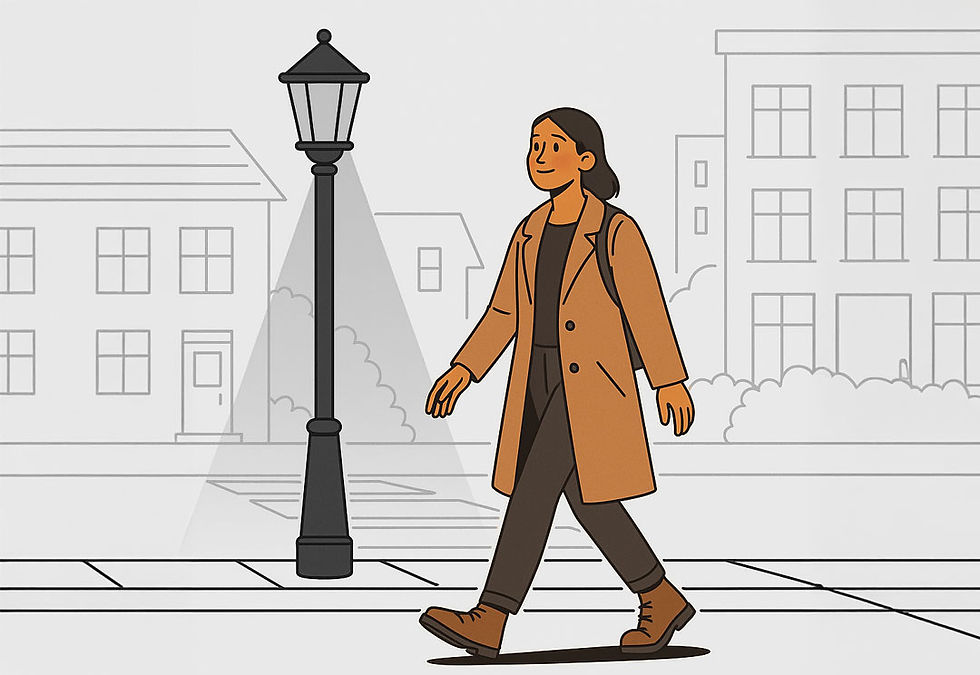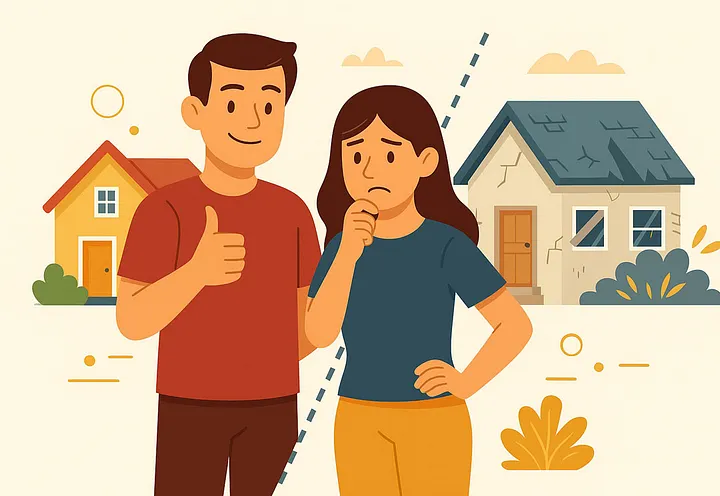Best Neighborhood Features for Home Value and Quality of Life
- TCS Hello
- Sep 2
- 6 min read

In Los Angeles and other big cities, neighborhoods often look appealing at first glance. Palm-lined streets, lively cafes, or fresh construction can give the impression of a thriving community. But once you live in a place day after day, surface details matter less. What really shapes the experience is how the neighborhood functions in daily life.
A good neighborhood makes life feel easy, safe, and connected. You can walk to the store. There are parks nearby. The local schools are strong, whether you have children or not. The streets feel safe after dark. The design of the area encourages neighbors to see each other and spend time outside.
These qualities are what planners and real estate professionals often call “livability.” They are also the same qualities that support home values. Research has shown again and again that neighborhoods with access to daily amenities, good schools, reliable transportation, and green space consistently outperform areas that lack them. Buyers recognize these signals and are willing to pay for them.
So what makes a neighborhood truly livable, and how does that connect to home value? Let’s look at the features that matter most.

Access to Daily Essentials
Convenience is one of the clearest signs of neighborhood quality. A neighborhood where you can buy groceries, fill a prescription, or grab coffee without sitting in traffic is far more livable than one where every errand requires a freeway drive.
Walk Score, a company that ranks neighborhoods based on access to amenities, has studied how convenience relates to property values. In joint research with Redfin, Walk Score found that each point increase in a neighborhood’s Walk Score was linked to higher home values. In some markets, homes in walkable neighborhoods sold for up to $65,000 more than similar homes in car-dependent areas. You can read the report here: https://www.redfin.com/news/walk-score-impact-on-home-prices/
For residents, nearby services reduce stress and save time. For buyers, they are a signal of long-term demand. A home near a grocery store, pharmacy, or school will almost always attract more interest than one in an isolated subdivision.
Los Angeles Example: Neighborhoods like Atwater Village and Silver Lake attract buyers partly because daily services are within walking distance. Grocery stores, corner cafes, and small shops create convenience that suburban-style areas often lack.

Transportation and Connectivity
Commute times are one of the most important factors in how people experience their homes. A beautiful house is less appealing if it comes with a 90-minute drive to work. That is why neighborhoods with strong transportation connections tend to perform better over time.
Connectivity takes many forms. Reliable public transit is one. Sidewalks, safe bike routes, and well-connected street grids are others. The American Public Transportation Association (APTA) found that homes near public transit stations outperformed others by 24 percent in value over time compared to the regional average. The full report is here: https://www.apta.com/research-technical-resources/transit-oriented-development/transit-oriented-development-and-property-values/
Shorter commutes improve quality of life by giving residents more time at home and reducing daily stress. Buyers increasingly factor this into decisions. Well-connected neighborhoods are in demand today, and as cities expand their transit and bike networks, they will likely see even stronger growth.
Los Angeles Example: The Expo (E) Line light rail has reshaped parts of Culver City and Santa Monica. Once the line was extended, demand for housing near stations rose because residents could connect to downtown without relying on freeways.

Safety and Stability
Safety is the foundation of livability. Shops, parks, and transit access lose their appeal if residents do not feel secure using them.
Research from the Brookings Institution has documented the impact of crime on property values. Their work shows that crime reduces demand and lowers prices, while improvements in safety lead to measurable increases in home values. You can read more here: https://www.brookings.edu/articles/crime-and-property-values/
Perceptions of safety matter almost as much as actual crime statistics. Well-lit streets, visible crosswalks, active neighborhood watch programs, and general upkeep all influence how safe residents feel.
For homeowners, safety brings peace of mind. For buyers and investors, it signals stability. Safer neighborhoods tend to attract families and long-term residents, which helps property values hold steady even during market downturns.
Los Angeles Example: Neighborhoods like West Adams have seen renewed investment in lighting, streetscape improvements, and community activity. Alongside these changes, home prices have risen and demand has grown.

Schools and Education
Schools are one of the most consistent drivers of neighborhood value. Parents seek out high-performing schools, but even buyers without children often consider them because they know schools anchor resale demand.
A study by the National Bureau of Economic Research found that better school quality directly raised home values. The researchers measured that a one standard deviation increase in test scores corresponded to a 2 to 4 percent increase in property prices. The study can be read here: https://www.nber.org/papers/w6728
In Los Angeles, neighborhoods like Studio City and Playa Vista command premiums in part because they offer access to top-rated schools within the Los Angeles Unified School District. Homes in these zones often sell faster and for more money than similar homes outside them.
Schools act as long-term stabilizers for property markets. Even during economic slowdowns, families continue to prioritize them, which supports values.

Green Space and Recreation
Parks and open space are more than “nice-to-have” features. They directly shape livability by offering space for exercise, recreation, and community interaction. Green space also reduces stress and improves mental health.
The American Planning Association has reported that homes near parks can be worth up to 20 percent more than similar homes farther away. You can access their publication here: https://www.planning.org/publications/document/9147824/
In Los Angeles, the transformation of the Los Angeles River has boosted nearby neighborhoods like Elysian Valley. Adding trails and green areas has improved quality of life and increased buyer demand. Silver Lake’s hidden staircases and pocket parks offer similar benefits, creating walkable connections and community gathering points.
For buyers, access to green space is a visible sign that a neighborhood supports a higher quality of life. For sellers, it is a feature that can directly add to resale value.

Community and Culture
Neighborhoods are more than buildings and infrastructure. They are social spaces defined by the activity within them. Cafes, restaurants, libraries, and community centers add to a neighborhood’s identity. Farmers markets, art shows, and live events create reasons for people to gather.
Research published in the Journal of Urban Affairs has shown that cultural amenities strengthen neighborhood vitality and make them more attractive to long-term residents. The paper “Cultural Sustainability in the Historic Environment” highlights how cultural presence supports economic resilience.
Neighborhoods with active cultural life often weather economic downturns better than those without. For buyers, cultural amenities are a sign of vibrancy. For residents, they add richness to daily life.
Los Angeles Example: Echo Park has developed a reputation for local culture through its independent shops, music venues, and community events. These features draw buyers who want more than just a place to live they want a community.

Future Investment and Infrastructure
The future direction of a neighborhood is just as important as its current condition. Public investment in infrastructure often reshapes property demand.
The Los Angeles Times has reported on how new Metro stations create demand in surrounding neighborhoods. For example, properties near the extension of the Purple (D) Line have seen increasing interest even before the project is complete. Research on transit-oriented development from APTA confirms that homes near new transit lines appreciate faster than others in the region. Report: https://www.apta.com/research-technical-resources/transit-oriented-development/transit-oriented-development-and-property-values/
Infrastructure can take many forms: new parks, school upgrades, improved roads, or cultural investments. For current residents, these add convenience and opportunity. For buyers, they are signs of long-term growth potential.
Spotting these early signals like city zoning changes or infrastructure funding is one of the best ways to identify neighborhoods with rising property values.

Why Livability and Value Are Linked
The qualities that make a neighborhood livable are the same ones that make it valuable. Access to services, reliable transportation, safety, schools, green space, culture, and infrastructure are not just lifestyle perks. They are market signals that indicate lasting demand.
Homes are never isolated assets. They are tied to the neighborhoods that surround them. A home in a community with strong features will almost always attract more buyers and hold its value better than a similar home in a less connected area.

Final Thoughts
When people shop for homes, they often focus on square footage, finishes, or lot size. But what surrounds the house matters just as much. A strong neighborhood is one with convenient services, safe streets, reliable schools, parks and trails, cultural activity, and visible investment in the future.
These features improve quality of life for residents. They also protect and increase property values for owners. Buyers may not always use the word “livability,” but they feel it when they see shorter commutes, active sidewalks, busy cafes, and full neighborhood parks.
For anyone buying, selling, or investing, the lesson is straightforward: look beyond the house itself. If the neighborhood makes daily life easier and shows signs of stability and growth, the property is not only a better place to live it is also a stronger long-term investment.




Comments